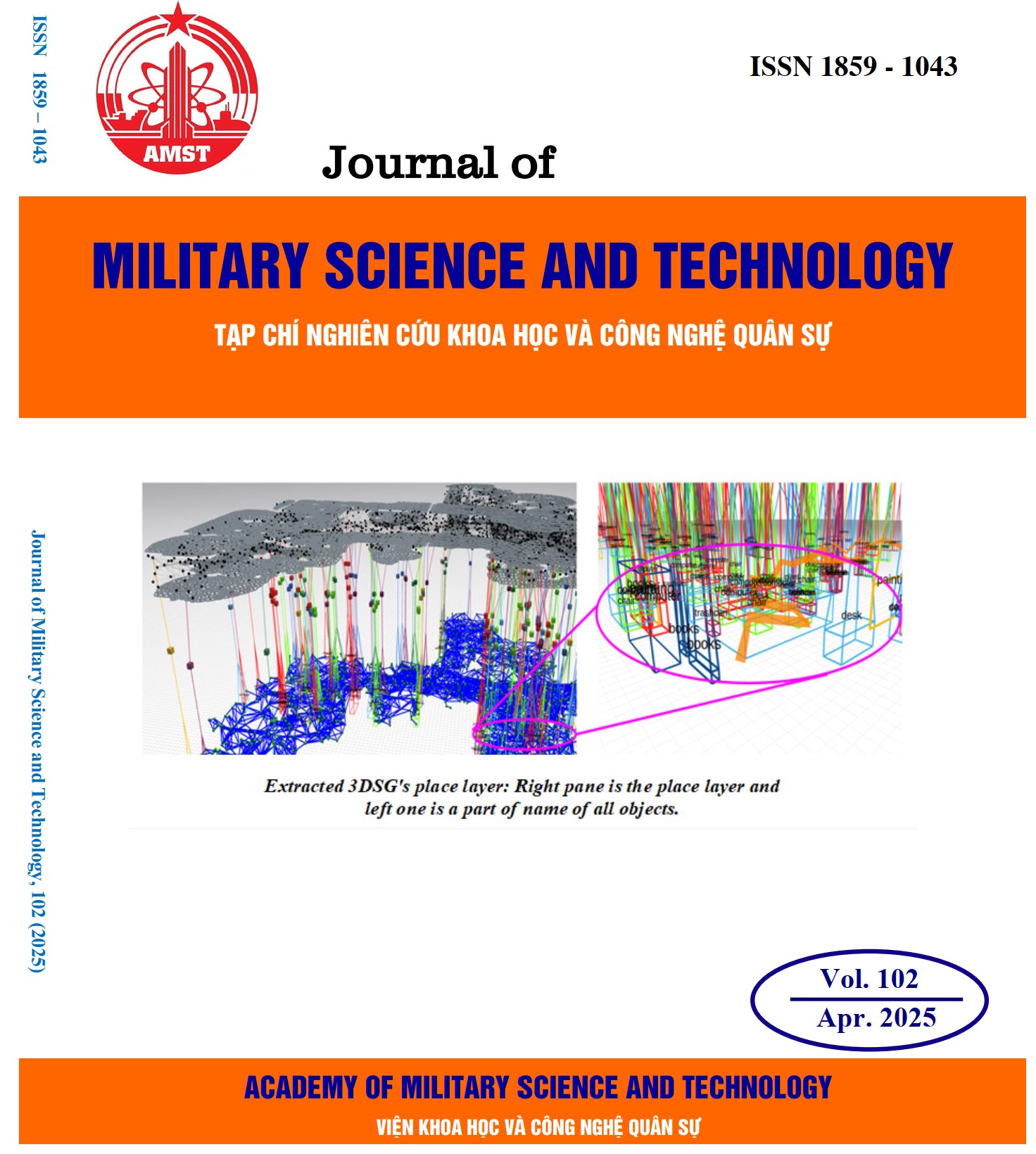Explosion sound classification using machine learning method based on audio features
474 viewsDOI:
https://doi.org/10.54939/1859-1043.j.mst.102.2025.133-140Keywords:
Audio classification; Spectrogram; Machine learning.Abstract
This study focuses on the classification of gunshot sounds using multiple audio features and machine learning methods. The gunshot sound samples are converted into spectrograms and processed using Support Vector Machine (SVM) for classification. The model was trained on a dataset of 851 audio files from 8 different gun types. Using a combination of audio features along with data preprocessing techniques, our SVM model achieved 95.32% accuracy in classifying different types of gunshots. The model also demonstrated good performance with real-world data, though with lower confidence levels due to environmental noise. This study provides an effective method for gunshot classification in defense security surveillance systems and sound forensics applications.
References
[1]. H. M. Sang and B. T. Duyen, "Research sound monitoring system using multi sensor for military purposes," Journal of Science and Technology, Hanoi University of Industry, vol. 59, no. 3, 2023.
[2]. L. C. Duan, T. V. Kien and N. N. Minh, "Sound source localization for intrusion warning systems," Journal of Military Science and Technology, vol. 59, pp. 90-96, (2019).
[3]. T. C. Thin, N. T. Kien, B. N. My and N. H. Hoang, "Improving sound event detecting in sound source localization using TDOA method," Journal of Military Science and Technology, vol. 80, pp. 60-70, (2022).
[4]. A. Bansal and N. K. Garg, "Environmental Sound Classification: A descriptive review of the literature," Intelligent Systems with Applications, vol. 16, p. 200115, (2022). DOI: https://doi.org/10.1016/j.iswa.2022.200115
[5]. T. Tuncer, Ş. Doğan, E. Akbal and E. Aydemir, "An automated gunshot audio classification method based on finger pattern feature generator and iterative relieff feature selector," ADYU Mühendislik Bilimleri Dergisi, vol. 8, pp. 225-243, (2021).
[6]. S. Hershey, S. Chaudhuri, D. P. W. Ellis, J. F. Gemmeke, A. Jansen and R. C. Moore, "CNN architectures for large-scale audio classification," in 2017 IEEE International Conference on Acoustics, Speech and Signal Processing (ICASSP), New Orleans, LA, USA, (2017). DOI: https://doi.org/10.1109/ICASSP.2017.7952132
[7]. S. B. Nesar, B. M. Whitaker and R. C. Maher, "Machine Learning Analysis on Gunshot Recognition," in Intermountain Engineering, Technology and Computing (IETC), Logan, UT, USA, (2024). DOI: https://doi.org/10.1109/IETC61393.2024.10564263
[8]. U. Zölzer, "Digital Audio Signal Processing", pp. 21-115: Wiley, (2008). DOI: https://doi.org/10.1002/9780470680018
[9]. J. Urbano, D. Bogdanov, P. Herrera, E. Gomez and X. Serra, "What is the effect of audio quality on the robustness of MFCCS and chroma features?," in 15th International Society for Music Information Retrieval Conference, (2014).
[10]. McFee, Brian, C. Raffel, D. Liang, D. P. Ellis, M. McVicar, E. Battenberg and O. Nieto, "Librosa: Audio and music signal analysis in python.," Proceedings of the 14th python in science conference, pp. 18-25, (2015). DOI: https://doi.org/10.25080/Majora-7b98e3ed-003
[11]. A. Chacón-Rodríguez, P. Julián, P. Alvarado and N. Hernández, "Evaluation of Gunshot Detection Algorithms," IEEE Transactions On Circuits And Systems, vol. 58, (2011). DOI: https://doi.org/10.1109/TCSI.2010.2072052
[12]. M. Grandini, E. Bagli and G. Visani, “Metrics for Multi-Class Classification: an Overview”, arXiv, (2020).







